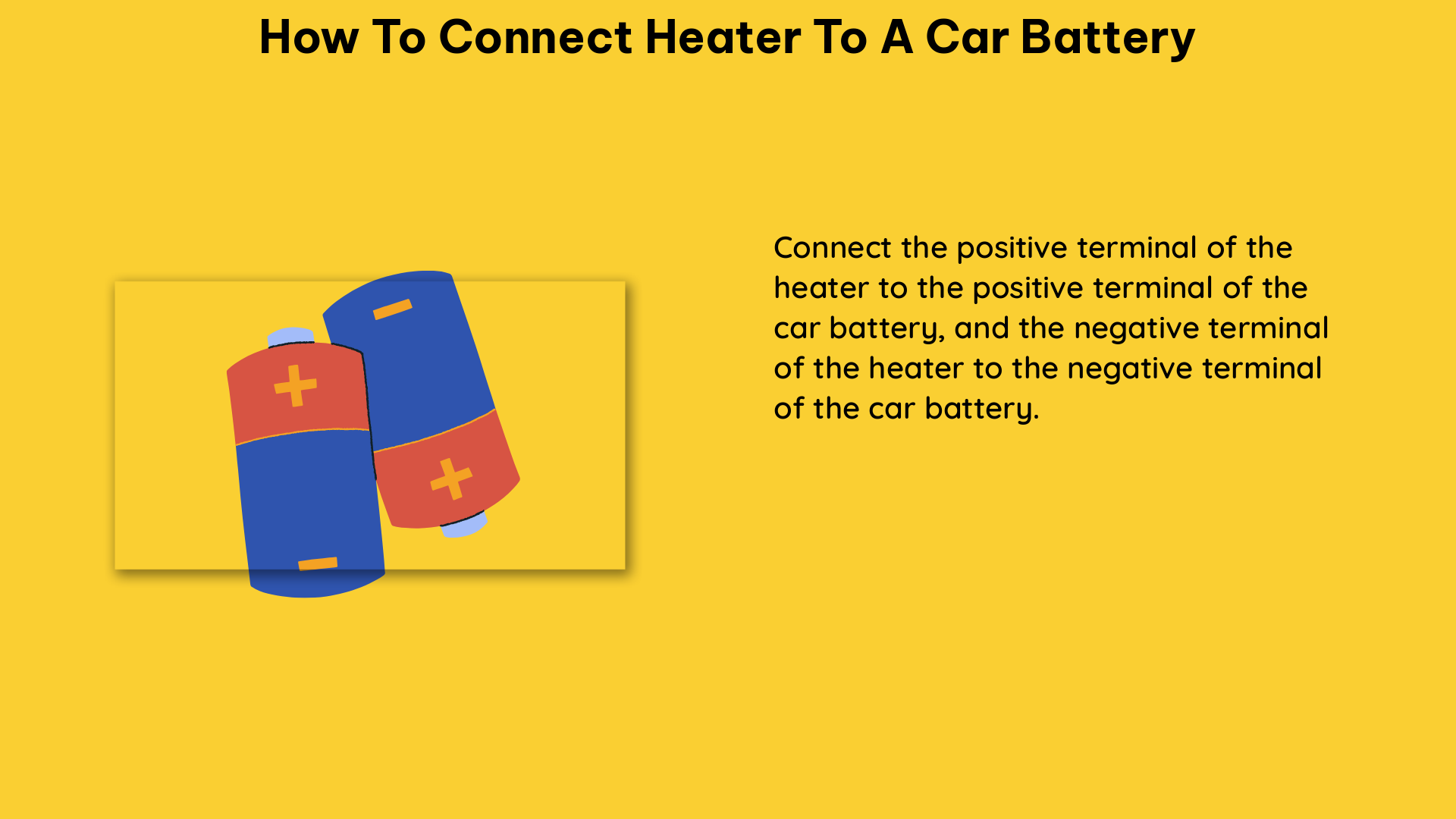Connecting a heater to a car battery can be a practical solution in emergency situations or when you need to heat a space without access to a traditional power source. However, it’s crucial to understand the power requirements, battery capacity, and proper wiring techniques to ensure safe and efficient operation. This comprehensive guide will walk you through the step-by-step process of connecting a heater to a car battery, providing you with the technical details and safety considerations to make the process a success.
Understanding Power Requirements and Battery Capacity
When connecting a heater to a car battery, the first step is to determine the power requirements of the heater and the capacity of the battery. Let’s consider a 300-watt heater as an example.
A 300-watt heater connected to a 12-volt car battery will require a current flow of approximately 25 amps. This is 20 times more current than when the heater is connected to a 230-volt AC mains supply. This high current can cause the wires to overheat and potentially burn, so it’s essential to use wires with a sufficient current rating.
The heat produced by a resistor, such as a wire, can be calculated using the formula I²R, where I is the current flowing through the resistor and R is the resistance of the resistor. For instance, a 6-amp wire would produce 1.69 watts of heat when carrying a current of 1.3 amps, but 625 watts of heat when carrying a current of 25 amps. This is 370 times more heat than the same wire being used to run a 300-watt heater off the mains.
A typical car battery has a capacity of around 40-60 Ah (Ampere-hours). With a 300-watt heater drawing approximately 25 amps, the battery would last for around 1.6-2.4 hours before needing to be recharged.
Selecting the Right Wiring

To avoid overheating and potential fire hazards, it’s crucial to use wires with a current rating that matches or exceeds the current required by the heater. For a 300-watt heater connected to a 12-volt car battery, you would need wire rated for at least 25 amps.
One suitable option is the Prysmian 6242Y 4mm² Twin & earth cable, which is rated for 37 amps and would be suitable for this application. When selecting the wire, consider the following factors:
- Current rating: The wire should have a current rating that meets or exceeds the current required by the heater.
- Gauge: The wire gauge should be appropriate for the current rating. For a 25-amp application, a 4mm² (or 12 AWG) wire would be a good choice.
- Insulation: The wire should have a durable insulation that can withstand the heat generated by the high current.
- Length: The wire should be as short as possible to minimize voltage drop and power losses.
Connecting the Heater to the Car Battery
Once you have the appropriate wiring, follow these steps to connect the heater to the car battery:
- Connect the positive (red) wire of the heater to the positive terminal of the battery.
- Connect the negative (black) wire of the heater to the negative terminal of the battery.
Ensure that the connections are secure and that there are no loose wires that could potentially short-circuit. It’s also crucial to make sure that the battery is in good condition and fully charged before connecting the heater.
Using an Inverter (Optional)
Depending on the heater, you may need an inverter to convert the DC power from the car battery to AC power required by the heater. The inverter should be rated for the power requirements of the heater and have a high enough efficiency to minimize power losses.
When selecting an inverter, consider the following factors:
- Power rating: The inverter should be rated for the power requirements of the heater, with some additional headroom to account for efficiency losses.
- Efficiency: Look for an inverter with a high efficiency (typically 90% or higher) to minimize power losses and maximize the runtime of the battery.
- Surge capacity: The inverter should have a surge capacity that can handle the initial startup current of the heater.
- Compatibility: Ensure that the inverter is compatible with the voltage and power requirements of both the car battery and the heater.
Safety Considerations
When connecting a heater to a car battery, safety should be the top priority. Always follow these safety guidelines:
- Use wires with a sufficient current rating to avoid overheating and potential fire hazards.
- Ensure that all connections are secure and there are no loose wires that could short-circuit.
- Make sure the battery is in good condition and fully charged before connecting the heater.
- Avoid using the heater for extended periods to prevent excessive battery drain.
- Keep the heater and wiring away from flammable materials or liquids.
- Monitor the system closely during operation and disconnect the heater if any issues arise.
By following these guidelines and the step-by-step instructions provided in this guide, you can safely and effectively connect a heater to a car battery, ensuring a reliable heat source in emergency situations or off-grid scenarios.
References
- Running a 300W Heater Off a 12V Car Battery
- Using External Car Battery to Run Space Heaters
- Trying to Install RoadPro 12 Volt Direct Connect Heater

The lambdageeks.com Core SME Team is a group of experienced subject matter experts from diverse scientific and technical fields including Physics, Chemistry, Technology,Electronics & Electrical Engineering, Automotive, Mechanical Engineering. Our team collaborates to create high-quality, well-researched articles on a wide range of science and technology topics for the lambdageeks.com website.
All Our Senior SME are having more than 7 Years of experience in the respective fields . They are either Working Industry Professionals or assocaited With different Universities. Refer Our Authors Page to get to know About our Core SMEs.